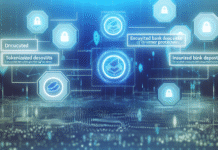In the ever-evolving world of blockchain technology, a significant shift is underway. Developers are increasingly focusing on making Web3 applications more intuitive and user-friendly. This shift towards user-centric design is crucial for bringing blockchain technology into the mainstream, prioritizing ease of use over technical complexity.
At the core of Web3 applications is the critical distinction between the front end and the back end. The front end is the user’s gateway into the app – the part of the website or decentralized application (DApp) that people interact with directly. It’s where the visual and interactive elements come together to form the user experience. Conversely, the back end consists of the technical infrastructure that powers these applications, including distributed ledgers, smart contracts, and consensus protocols. Although essential, these elements can be complex and overwhelming for the average user.
The real challenge lies in simplifying these complex systems for end-users. Overemphasizing technical details, such as the nuances of cryptographic keys or blockchain terminology, can deter potential adopters. The goal is to create a seamless experience, allowing users to interact with Web3 applications without getting overwhelmed by their underlying complexities.
This emphasis on user-friendliness is opening up Web3 technology to a wider audience, bridging the gap between blockchain enthusiasts and the general public. The evolution of user interfaces in technology, from the early days of computing to the user-friendly nature of modern smartphone apps, illustrates the importance of accessibility. In the Web3 domain, this principle is equally vital; simplifying the user experience is key to achieving widespread adoption.
One striking example of this approach is the Immutable Passport, an innovative onboarding process for the WAGMI Defense game. This system offers a password-free sign-up and integrates a noncustodial wallet, streamlining the process and allowing users to concentrate on the gaming experience instead of the complexities of blockchain technology. Passport’s user-friendly authentication options, such as sign-ins via Google, Apple, or email, enhance its accessibility, demonstrating the potential of intuitive designs in promoting Web3 adoption.
Focusing on user experience is not just about attracting a wider audience; it also enables more developers to enter the Web3 space. By simplifying the development process, new and innovative applications can be created more efficiently, accelerating the path towards mainstream adoption.
An essential aspect of user-centric design in Web3 is minimizing the risks and errors associated with complex systems. For instance, the Ethereum Name Service (ENS) allows users to replace long, complicated Ethereum addresses with readable domain names, drastically reducing the chances of transactional errors.
For Web3 developers, implementing gas optimization strategies is crucial, especially for apps that rely on microtransactions. High gas fees can be a barrier to adoption. Using layer-2 solutions like state channels or low-fee blockchains such as BNB Smart Chain, Solana, or Polkadot can create more user-friendly environments. Additionally, technologies like Zero-Knowledge (ZK) rollups, which batch transactions off-chain, offer faster confirmation times and lower fees, improving both efficiency and user experience.
With the increasing prevalence of mobile devices, ensuring that Web3 apps are optimized for mobile use is essential. Mobile-responsive applications can significantly broaden user reach and facilitate easier adoption.
It’s also vital for users to stay informed about the latest developments, best practices, and guidelines in the Web3 space. As blockchain and Web3 technologies continue to advance, staying knowledgeable is crucial for protecting digital assets and making the most of these innovative platforms.
In conclusion, the future of Web3 hinges on striking the right balance between technological advancement and user accessibility. By focusing on intuitive interfaces and simplifying the overall user experience, the blockchain community can pave the way for more inclusive and widespread adoption of Web3 technologies. This approach doesn’t just make blockchain technology more accessible to the average user; it also drives the evolution of a more connected and decentralized digital world.
















